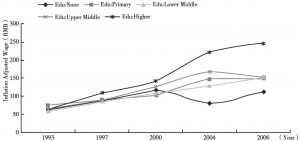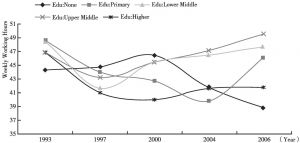论文
Market Reform and Urban Married Women’s Labor Supply in China during Have Women’s Wage Elasticities Changed during China’s Transition to a Free Market Economy?
检索正文关键字
论文目录
- 1 Introduction
- 2 A Brief History of the Labor Market in China
- 3 A Review of the Literature
- 4 Data
- 5 Methodology
- 6 Participation Equation Results
- 7 Hours of Work Equation Results
- 8 Summary and Discussion
相关文献
Should Practice Simple Central Banking to Help RMB Internationalization
Remittances Inflow and Real Exchange Rate: A Case Study of Pakistan Economy
Transmission Effects of International Media Sentiment on RMB International Level
查看更多>>>












